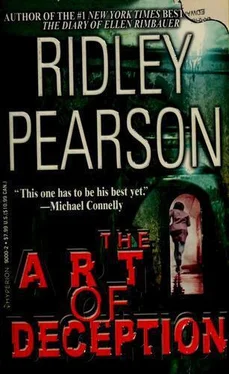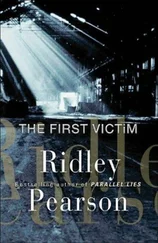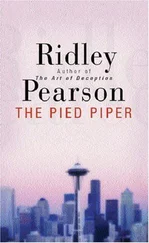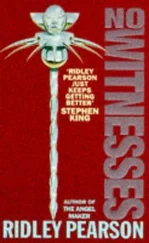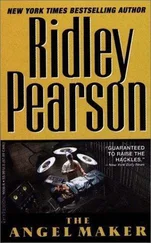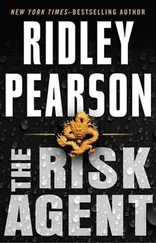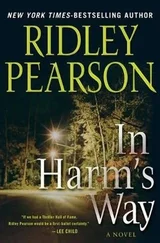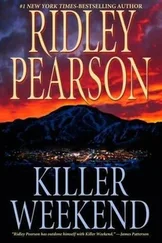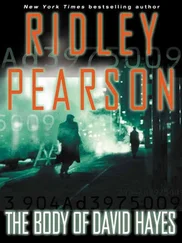Ridley Pearson - The Art of Deception
Здесь есть возможность читать онлайн «Ridley Pearson - The Art of Deception» весь текст электронной книги совершенно бесплатно (целиком полную версию без сокращений). В некоторых случаях можно слушать аудио, скачать через торрент в формате fb2 и присутствует краткое содержание. Жанр: Триллер, на английском языке. Описание произведения, (предисловие) а так же отзывы посетителей доступны на портале библиотеки ЛибКат.
- Название:The Art of Deception
- Автор:
- Жанр:
- Год:неизвестен
- ISBN:нет данных
- Рейтинг книги:3 / 5. Голосов: 1
-
Избранное:Добавить в избранное
- Отзывы:
-
Ваша оценка:
- 60
- 1
- 2
- 3
- 4
- 5
The Art of Deception: краткое содержание, описание и аннотация
Предлагаем к чтению аннотацию, описание, краткое содержание или предисловие (зависит от того, что написал сам автор книги «The Art of Deception»). Если вы не нашли необходимую информацию о книге — напишите в комментариях, мы постараемся отыскать её.
The Art of Deception — читать онлайн бесплатно полную книгу (весь текст) целиком
Ниже представлен текст книги, разбитый по страницам. Система сохранения места последней прочитанной страницы, позволяет с удобством читать онлайн бесплатно книгу «The Art of Deception», без необходимости каждый раз заново искать на чём Вы остановились. Поставьте закладку, и сможете в любой момент перейти на страницу, на которой закончили чтение.
Интервал:
Закладка:
The walls of this third room were brick covered in thick layers of paint. Generations earlier, some window openings had been bricked closed and painted over. Those window holes suggested an outside wall. Boldt rubbed his hand on the cool brick. “I’m looking to get on the other side of this.”
Vanderhorst remained disinterested, a maintenance guy going through the motions. “Wouldn’t that be dirt?”
Boldt repeated his earlier question about flooding, somewhat astonished that the quantity of water so close wouldn’t have resulted in any flooding.
“Listen, what do I know? You could check with my boss.”
He asked irritably, “You seen enough?”
Still touching the wall, Boldt asked, “Have you ever come across any doors, holes in the wall, the floor … anything that might lead somewhere outside this basement?”
“The bus tunnel … they had problems with that water main thing, I think.”
This comment stirred Boldt’s interest-a light went off inside him. “Which wall is that?”
Vanderhorst pointed to the nearest wall of the rectangular room. With some checking, Boldt determined it was the same wall as the one in the utility room with the bricked-up windows.
“We’re done here,” an excited Boldt announced.
Vanderhorst led the way back upstairs, letting Boldt go ahead as he lagged behind to shut off the lights.
Boldt reached the EXIT door down the hall, which was alarmed with a red panic bar.
“You’ll get me fired, you push that.” Vanderhorst stood a few yards behind Boldt, watching him. He’d crept up on Boldt, and that bothered him.
“Where’s it lead?”
“Onto Columbia. It’s a fire exit. You want to see the security people, they’re the first door to the right, upstairs, in Admin.”
Boldt thanked Vanderhorst and walked through the lobby back out onto the street, debating his next move. He had other businesses yet to explore within this city block, all with potential access to the Underground, according to Babcock.
Frustrated by his lack of discovery at the bank, Boldt called into the office and assigned two of his detectives to do that door-to-door footwork for him.
To his right, he saw the entrance to the bus tunnel station that fronted Public Safety. He made up his mind, choosing the tunnel for himself.
When Washington State builds a transportation project, 1 percent of the contracted cost is budgeted to the arts, for aesthetics.
The result is an eclectic mix of sculpture, writing, music, and painting, little gems that catch the public unaware. In the case of the pedestrian entrances to the bus tunnel, it included poetry engraved into the kick plates of the stairs, as well as colorful sculpture attached to the walls.
At the Pioneer Square station, escalators, stairs, and elevators lead down first to a vast tier, an open plaza that spans the tunnel traffic below, providing passengers access to any of several additional stairs and escalators for northbound or southbound bus routes. The incandescent lighting is bright; sounds echo off the concrete and tile, and because the buses run electrically once into the tunnel, there are virtually no odors other than a faint trace of burning rubber, a condition that put Boldt ill at ease.
The underground bus tunnel stations had not proven popular enough to account for the enormity of such a facility. It swallowed up the two dozen passengers down on the platforms awaiting the arrival of a bus, and Boldt along with them.
The director of bus tunnel maintenance, a man named Chuck Iberson, was a big man with florid cheeks and thinning white hair. Iberson’s military background showed in his attentiveness and respect for Boldt. He had treated Boldt’s summons with the utmost seriousness, arriving to meet him in less than fifteen minutes. By nature Boldt couldn’t help looking at people as possible suspects. Iberson’s overzealous willingness to respond so quickly, like Per Vanderhorst’s mealy and vaguely sleazy sniveling persona, made the detective think twice about the personalities that lurked beneath. A bank janitor might have a shot at an unsuspecting woman, as might a man in a position of authority like Iberson. Boldt knew from his years of experience that suspects often surfaced in the most unlikely places.
“I’m interested in the water main break, back on the twentieth and twenty-first of March.” He felt impatient. He’d come down here on nothing but a hunch. Nine out of ten times, such spontaneity proved a mistake.
“What a mess.” Iberson appeared suddenly uneasy, and Boldt wondered why.
“The possibility, if any, that a person could gain access to the Underground from inside the tunnels,” Boldt continued.
Iberson look confused by that suggestion. For impact, Boldt returned to his original question. “I’m investigating the drowning of a city worker. Pinpointing the source of the flooding may help us out some.”
Iberson appeared somewhat relieved.
Boldt explained, “The EMTs and Fire Rescue who hauled him out reported being inside an area that sounds to us like a part of the old Underground. Access to that area might solve some of the questions surrounding the worker’s death.”
“I got no problem with that whatsoever. You want to look at my tunnel, it’s yours. But I don’t know nothing about no underground city, and if you want to see where we flooded, we’ll have to walk it, and it’s tight in those tunnels.” He pointed to where the station’s expanse condensed to the mouths of two concrete tunnels that each carried one-way bus traffic.
“So we’ll walk it,” Boldt answered.
“Okay, but I gotta put you in an orange vest and hard hat.”
“I can live with that.”
Ten minutes later, Iberson led Boldt up the left tunnel, walking against the direction of bus traffic. They both wore Day-Glo orange vests and yellow hard hats.
The transportation department used a good number of double buses joined in the center by an accordion. Nicknamed dragons-because the second of the two sections was “dragging” behind the first-they stretched some fifty feet stem to stern and were hated by all motorists.
“If I tell you it’s a dragon coming,” Iberson warned, “you put your back against the wall and keep your toes behind the white line. Them tail sections tend to wander a little, so don’t trust what you see.”
Passing a gray door marked EMERGENCY EXIT-ALARM WILL SOUND, Boldt asked about the exits.
Iberson explained, “EERs,” pronouncing it “Ears.” “Emergency Evacuation Routes. Two per block, in both tunnels.”
“Where do they come out up top?” Boldt asked.
“Most are spiral staircases leading up to trapdoors in the sidewalks.”
Boldt had walked Third Avenue for years and never paid attention to the existence of the trapdoors. “What trapdoors?”
“They look like metal plates up there. Granted, a couple of the EERs connect through to adjacent buildings, but most head straight to the surface, swear to God.”
“Talk to me about the ones that connect through buildings.”
It occurred to Boldt these buildings might be candidates on Babcock’s list.
“Listen, with all due respect, I keep the tunnels lit and drained and the ventilation system working. I don’t know all that much about the EERs.”
There wasn’t much of anything to see. A bus approached, and Boldt pressed his back to the curved concrete. It swept past, sucking his tie from under the vest. Iberson never broke stride.
“I’d like a complete copy of the original construction plans,”
Boldt said, “including the ventilation and drainage systems.”
Iberson stopped walking and waited for Boldt to catch up. “I didn’t build them, Detective, but I can see what I can do for you.” It was lieutenant, not detective, but Boldt didn’t correct the man. Iberson pointed out two drains in the roadbed. “This is where we first saw problems. Normal drainage is no problem, and we have pumps that kick in at a certain volume, but once that water main broke, we couldn’t keep up. We had two feet down here before we knew it. Enough for the buses to hydro-plane, so we closed down. It was a bitch. The overflow had breached the ventilation ducting. It wasn’t the drains backing up, which is what we first thought-that our pumps had failed.”
Читать дальшеИнтервал:
Закладка:
Похожие книги на «The Art of Deception»
Представляем Вашему вниманию похожие книги на «The Art of Deception» списком для выбора. Мы отобрали схожую по названию и смыслу литературу в надежде предоставить читателям больше вариантов отыскать новые, интересные, ещё непрочитанные произведения.
Обсуждение, отзывы о книге «The Art of Deception» и просто собственные мнения читателей. Оставьте ваши комментарии, напишите, что Вы думаете о произведении, его смысле или главных героях. Укажите что конкретно понравилось, а что нет, и почему Вы так считаете.
